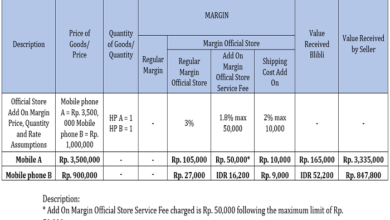Tendrils of Resilience in a Frigid Season: Fragile Hope in Nguyen Duy Tri’s Wait for Winter

Nestled within the stark prose of “Wait for Winter” (2022), Nguyen Duy Tri’s story transcends the limitations of dystopian fiction to craft a poignant narrative of environmental collapse and the enduring human spirit. Through the eyes of Lan, a young woman navigating a world ravaged by climate catastrophe, Tri weaves a tapestry of resilience, vulnerability, and the fragile hope that blossoms even in the harshest of landscapes.
A Tapestry of Broken Earth
Tri’s dystopia isn’t painted with the typical tropes of oppressive regimes or futuristic technology; it’s etched in the scars of a dying planet. Flooded coastlines, ravaged ecosystems, and the ever-present threat of a relentless winter paint a stark portrait of a future where humanity dances on the precipice of extinction. Lan, born into this broken world, embodies the struggle for survival in the face of environmental adversity. Her journey is a testament to the tenacity of the human spirit, a constant quest for sustenance and community amidst the wreckage of a civilization swallowed by rising tides.
The Echoes of Lost Humanity
The story isn’t solely preoccupied with the external struggle against environmental ruin; it delves into the profound emotional cost of such cataclysm. Lan grapples with the loss of loved ones, the fragmentation of communities, and the haunting echoes of a world that once teemed with life. The constant threat of extinction casts a long shadow, forcing Lan and her companions to confront the fragility of existence and the preciousness of the remnants of a lost humanity they fight to preserve.
A Seed of Hope in the Barren Land
Despite the bleakness of the setting, Tri refuses to drown his narrative in despair. He sows the seeds of hope in the smallest gestures of human connection. Lan’s unwavering courage, her fierce protectiveness of her younger brother, and the fragile bonds of trust she forms with fellow survivors paint a testament to the resilient spirit that flickers even in the darkest corners. These acts of compassion, however small, become beacons of light, reminding us that humanity’s capacity for love and empathy can bloom even in the most barren of landscapes.
The Fragile Beauty of Resilience
Tri’s prose is a powerful instrument in depicting this resilience. He captures the stark beauty of a world ravaged by nature’s fury, drawing parallels between the harshness of the environment and the steely resolve of his characters. He juxtaposes the desolate landscapes with moments of profound human connection, creating a tapestry of contrasting emotions that resonate deeply with the reader.
A Journey Unwritten in the Frost
The ending of “Wait for Winter” remains deliberately open, mirroring the uncertainties of the characters’ future. While not a clear-cut triumph over adversity, it offers a glimmer of hope, a suggestion that even in the face of seemingly insurmountable odds, the human spirit can endure, adapt, and find new ways to thrive. Lan’s journey, with its moments of despair and triumphs of resilience, becomes a metaphor for the ongoing struggle of humanity to grapple with the consequences of environmental decline.
Conclusion
Nguyen Duy Tri’s “Wait for Winter” is not just a dystopian survival story; it’s a poignant meditation on the human spirit’s capacity for resilience in the face of environmental cataclysm. Through Lan’s journey, Tri compels us to confront the harsh realities of a world struggling with the consequences of environmental neglect, but he also reminds us of the enduring strength of human connection and the unwavering hope that can blossom even in the bleakest of landscapes.
The story’s open ending reflects the ever-present uncertainty of humanity’s future in the face of a changing climate. It doesn’t offer easy answers or promise a bright tomorrow, but instead, asks us to engage in a crucial dialogue about our relationship with the planet and the choices we must make to ensure a sustainable future. Lan’s unwavering determination, her fierce love for her brother, and the fragile bonds she forges with fellow survivors serve as a testament to the enduring power of hope, a reminder that even the smallest acts of human connection can become the embers that ignite the fire of resilience in the face of an uncertain winter.
FAQ
- What genre is “Wait for Winter”?
While categorized as science fiction within the “Wait for Winter” collection, the story blends elements of dystopian fiction, climate fiction, and even coming-of-age narratives, creating a unique and emotionally resonant experience.
- Is the story fast-paced and action-packed?
The focus lies more on character development and the exploration of internal conflicts rather than external action. The suspense builds gradually, fueled by the ever-present threat of environmental dangers and the emotional toll of survival.
- Is there a clear protagonist and antagonist?
The lines are blurred. Lan embodies the individual fighting for survival and preserving humanity, while the harsh environment itself can be seen as the antagonist. However, the story acknowledges the complexities of both, portraying the environment not as a malicious force but as a consequence of human actions.
- Does the story offer any solutions to the climate crisis?
“Wait for Winter” doesn’t explicitly offer solutions but serves as a powerful cautionary tale and a call to action. By depicting the devastating consequences of environmental inaction, it urges readers to contemplate the impact of our choices and to strive for a future where humanity learns to co-exist in harmony with the natural world.




